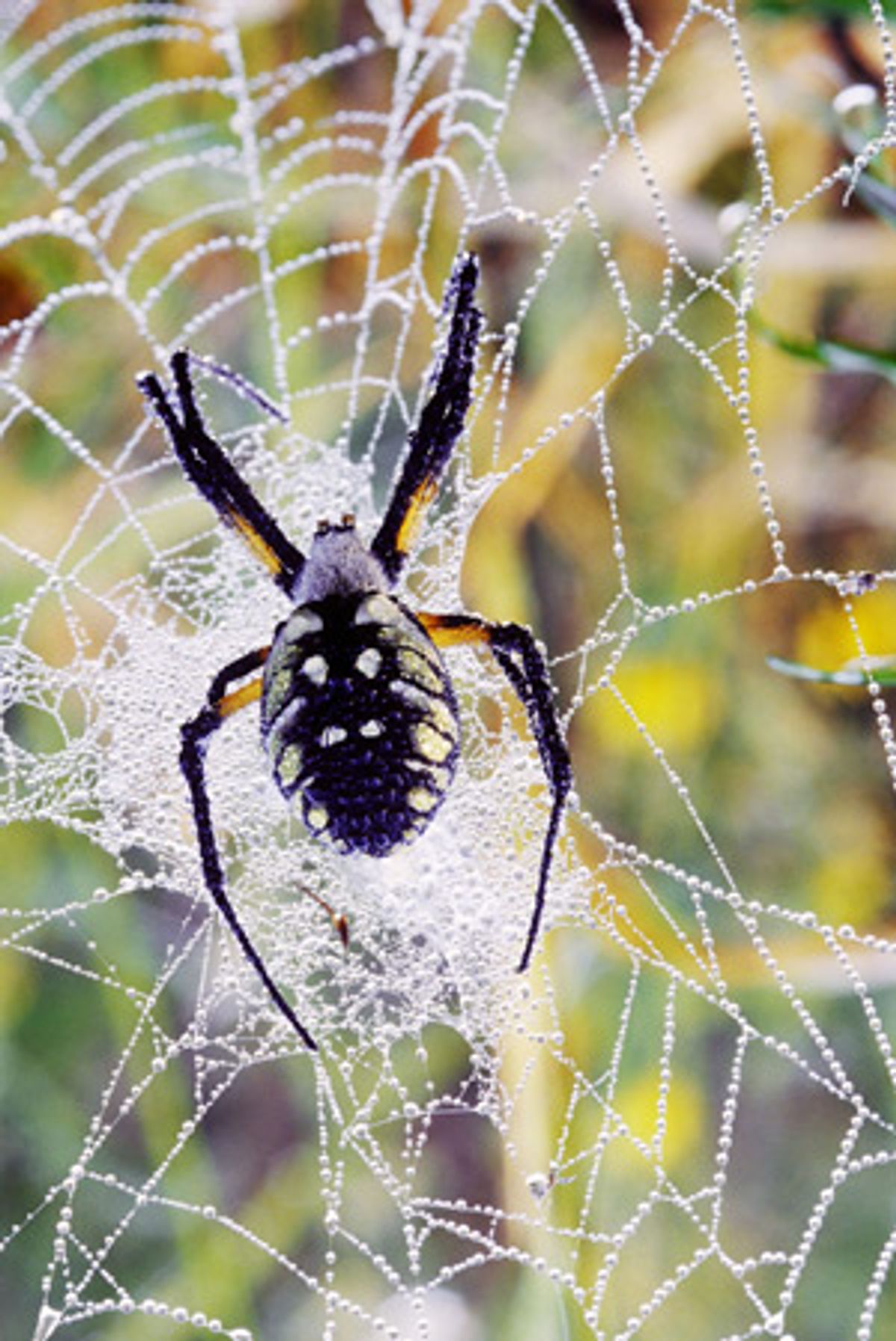But while most researchers focus on the mechanical aspects, “spider silk, in fact, has an important and promising role in electronics,” says Eden Steven, a graduate research assistant in condensed matter science at Florida State University’s National High Magnetic Field Laboratory.
The lab studies the physical properties of novel materials, some with dimensions as small as 10 μm, such as tiny crystals with superconducting properties. Working in the group with FSU physics professor James Brooks, Steven has been exploring the electronic properties of spider silk and its surface interaction with conducting materials. Such a thin, resilient material could prove useful for making electrical contacts for tiny devices and for samples of new materials.
As a protein-based polymer, spider silk is naturally insulating, so the researchers are exploring what happens when it’s coated with iodine, gold, or carbon nanotubes. In all three cases, the silk turned into a more conductive fiber. However, “gold really likes spider silk,” Steven told scientists at the American Physical Society’s March meeting in Boston. “Gold nanoparticles adhere to spider silk very well.”
The team started with 3.5-μm-wide silk harvested from Nephila clavipes, the golden orb-weaving spider. They placed the silk in a vacuum chamber and coated it with gold. The resulting fiber had electrical conductivity from the gold plus flexibility from the silk, and it measured only 1/25th the diameter of a human hair. That allowed the fibers to be used—even without conductive paste—as contacts on tiny organic crystals, which the lab chills to cryogenic temperatures to study their superconductivity. Standard wires made of gold or other metals aren’t elastic enough and tend to lose contact with the soft organic crystals as temperatures change. The group found that the gold-coated silk fibers worked as contacts down to the lowest temperature they tested at, about 260 millikelvin.
The researchers also coated the silk with carbon nanotubes, creating highly sensitive strain sensors. Those could be used as heart-pulse monitors, Steven suggests. Meanwhile, the iodine-doped silk showed changes in conductivity that depended on relative humidity. But the science didn’t stop there. Steven heated the iodine-doped silk in an argon atmosphere to 800°C, creating a pyrolyzed, carbon-coated fiber that turned out to be a p-type semiconductor. The researchers then used those fibers to make filaments for incandescent bulbs.
Steven says the group is working on using the functionalized silk to make electronic components, such as diodes, inductors, and capacitors. It should be possible to build a field-effect transistor out of the semiconducting version of the material. (Other labs have already used silk from the silk moth, Bombyx mori, as the gate insulator in a transistor.) Conducting and semiconducting fibers could be readily woven into fabrics to make so-called smart textiles, such as shirts that could sense temperature or other environmental changes. Combining the Florida State research with efforts under way elsewhere to create spider silk artificially might allow engineers to mass-produce fibers with tunable electrical properties, Steven says.
Other teams are also starting to explore properties of spider silk that go beyond the mechanical. In March, Xinwei Wang, an associate professor of mechanical engineering at Iowa State University, reported in Advanced Materials that spider silk has exceptionally high thermal conductivity. Working with silk from the same type of spider the FSU team used, he found that it transferred heat even better than such excellent conductors as aluminum and iron and that the conductivity improved as the silk was stretched. He measured a conductivity of 416 watts per meter-kelvin, compared with 401 W/m-K for copper. That property may lead to better heat sinks for microelectronics.
About the Author
Neil Savage, based in Lowell, Mass., writes about strange semiconductors and amazing optoelectronics. In the April 2012 issue he reported on molybdenum disulfide, a potential rival to graphene in nanoelectronics.
